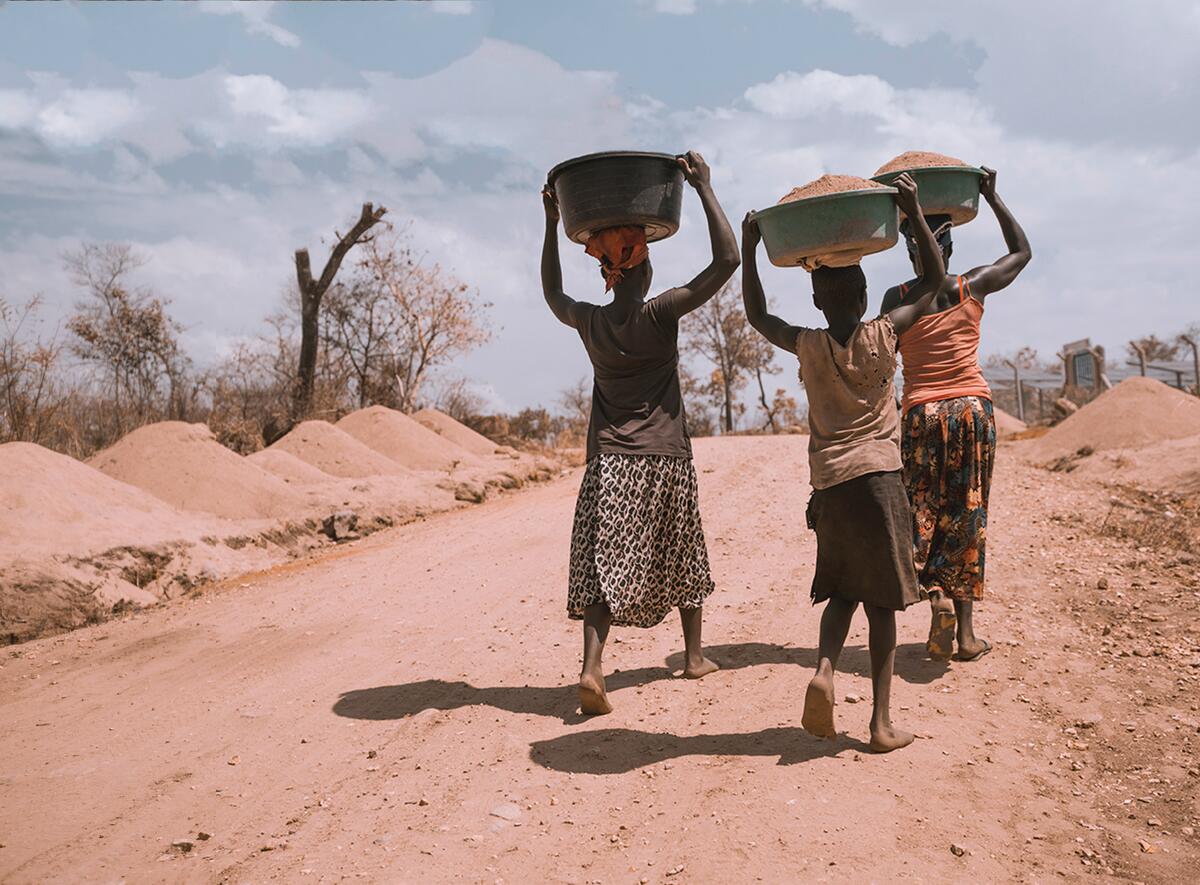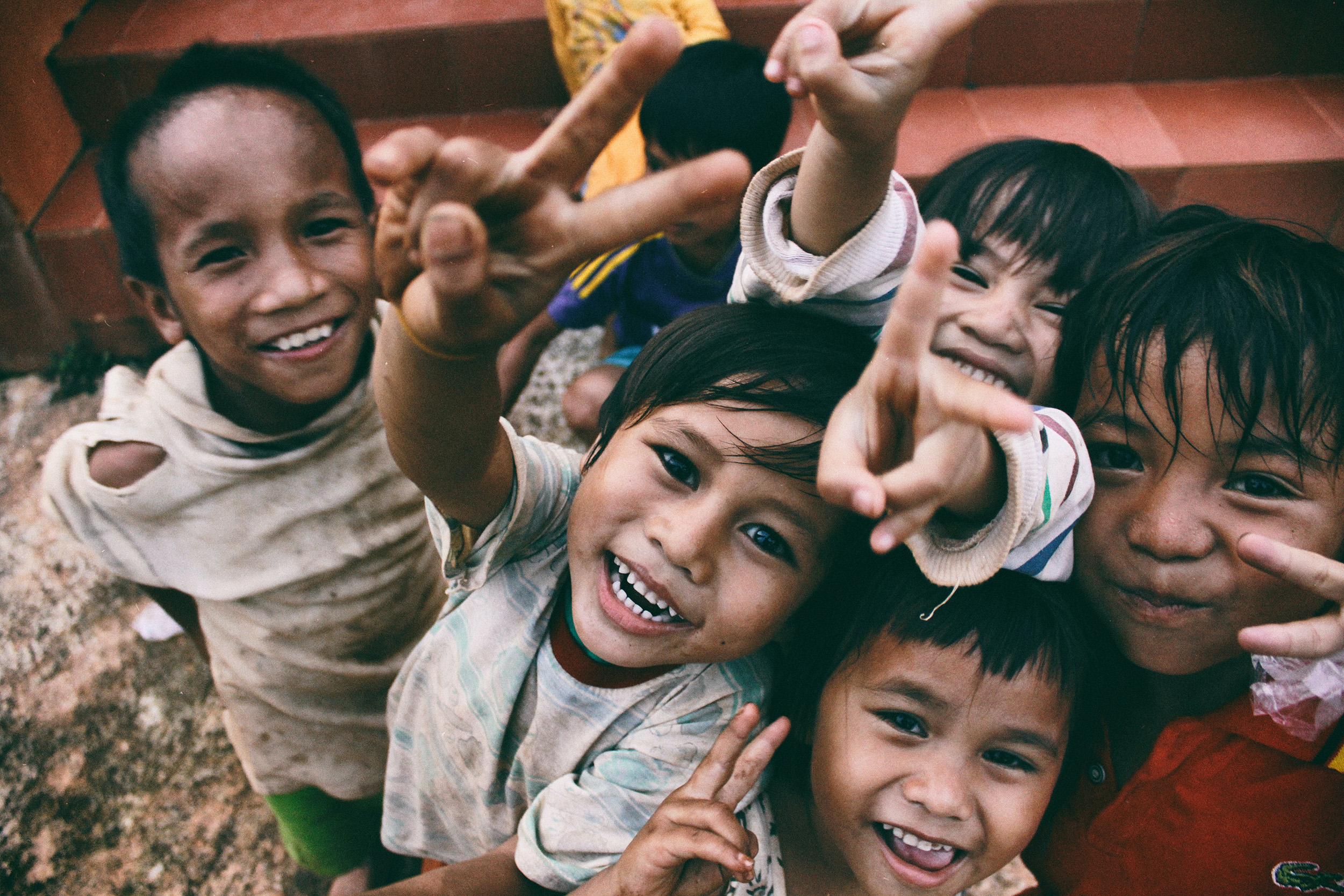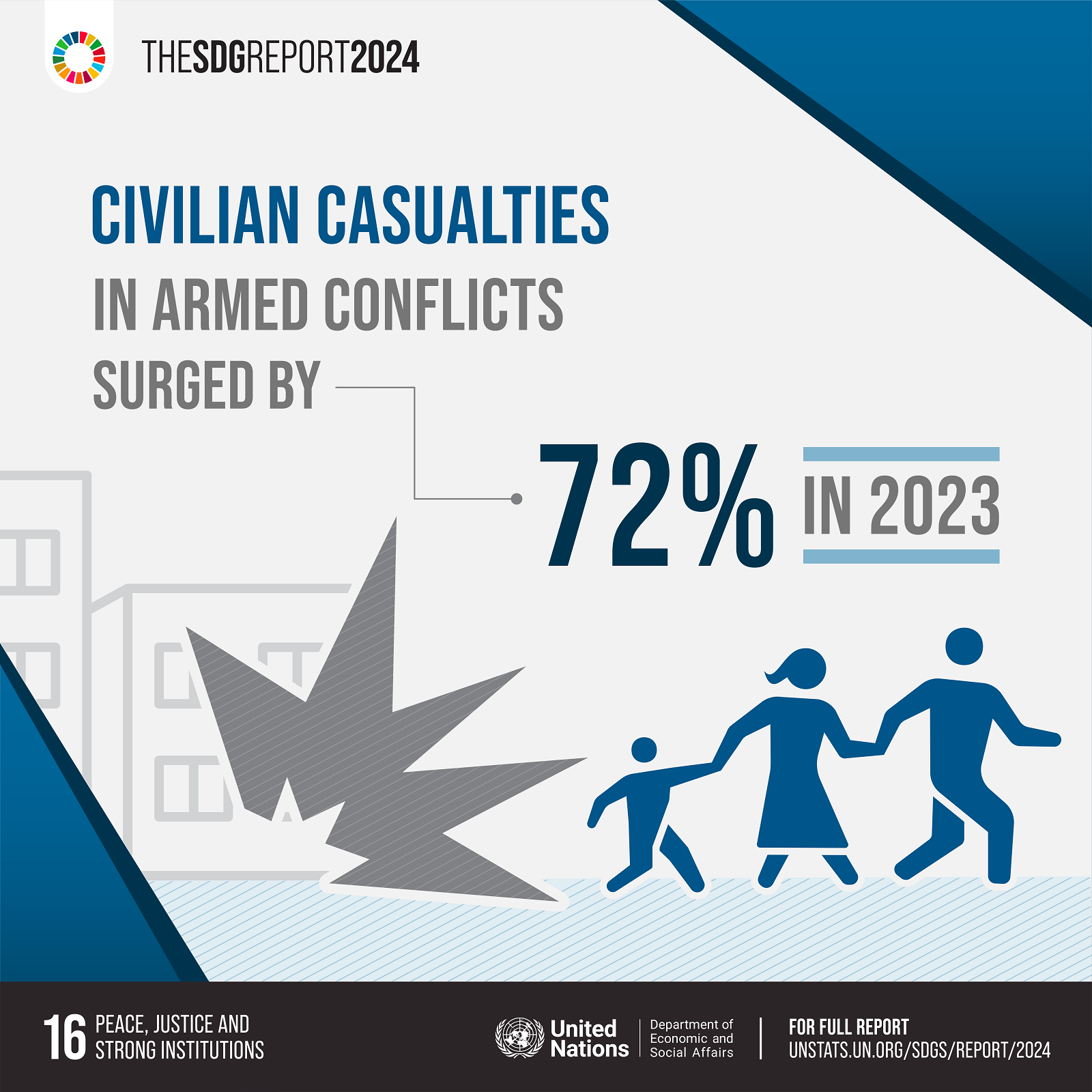Overview
Targets and Indicators

16.1
Significantly reduce all forms of violence and related death rates everywhere
16.1.1
16.1.2
16.1.3
Proportion of population subjected to (a) physical violence, (b) psychological violence and/or (c) sexual violence in the previous 12 months
16.1.4
Proportion of population that feel safe walking alone around the area they live after dark

16.2
End abuse, exploitation, trafficking and all forms of violence against and torture of children
16.2.1
Proportion of children aged 1–17 years who experienced any physical punishment and/or psychological aggression by caregivers in the past month
16.2.2
16.2.3
Proportion of young women and men aged 18–29 years who experienced sexual violence by age 18

16.3
Promote the rule of law at the national and international levels and ensure equal access to justice for all
16.3.1
Proportion of victims of (a) physical, (b) psychological and/or (c) sexual violence in the previous 12 months who reported their victimization to competent authorities or other officially recognized conflict resolution mechanisms
16.3.2
16.3.3
Proportion of the population who have experienced a dispute in the past two years and who accessed a formal or informal dispute resolution mechanism, by type of mechanism

16.4
By 2030, significantly reduce illicit financial and arms flows, strengthen the recovery and return of stolen assets and combat all forms of organized crime
16.4.1
16.4.2

16.5
Substantially reduce corruption and bribery in all their forms
16.5.1
16.5.2

16.6
Develop effective, accountable and transparent institutions at all levels
16.6.1
16.6.2
Proportion of population satisfied with their last experience of public services

16.7
Ensure responsive, inclusive, participatory and representative decision-making at all levels
16.7.1
Proportions of positions in national and local institutions, including (a) the legislatures; (b) the public service; and (c) the judiciary, compared to national distributions, by sex, age, persons with disabilities and population groups
16.7.2

16.8
Broaden and strengthen the participation of developing countries in the institutions of global governance
16.8.1
Proportion of members and voting rights of developing countries in international organizations

16.9
By 2030, provide legal identity for all, including birth registration
16.9.1

16.10
Ensure public access to information and protect fundamental freedoms, in accordance with national legislation and international agreements
16.10.1
16.10.2

16.a
Strengthen relevant national institutions, including through international cooperation, for building capacity at all levels, in particular in developing countries, to prevent violence and combat terrorism and crime
16.a.1

16.b
Promote and enforce non-discriminatory laws and policies for sustainable development
16.b.1
Progress and Info
More frequent, intense and prolonged conflicts around the world are shattering people’s lives, communities and futures. Violence against women, children and marginalized groups remains widespread. Casualties among children and women in armed conflicts quadrupled in the biennium 2023–2024 compared with the previous biennium. While there was progress in accreditations of human rights institutions, many political systems fail to represent their populations fully, leading to declining trust. High pretrial detention rates and limited access to justice highlight the need for inclusive governance and rule of law. Achieving lasting peace requires an urgent global commitment to good governance, human rights, equal justice access and accountable institutions, emphasizing diplomacy and dialogue. Under the Global Programme on Strengthening the Rule of Law, Human Rights, Justice and Security for Sustainable Peace and Development of UNDP, support is provided for integrated initiatives to strengthen national institutions, promote accountability and ensure compliance with human rights obligations. It enhances justice and security mechanisms by providing legal services and advice, building the capacity of prosecutors, police and legal aid providers, and facilitating access to justice for internally displaced persons and survivors of gender-based violence. In addition, the Programme assists Governments in developing national action plans on business and human rights and advances people-centred policing approaches.
Target 16.1 - The global homicide rate declined from 5.9 victims per 100,000 population in 2015 to 5.2 in 2023. If the decline continues, the global homicide rate will drop 25 per cent from 2015 to 2030, falling short, however, of the target 50 per cent reduction. 131.
In 2024, conflict-related deaths rose 40 per cent from 2023 to at least 48,384 –the third consecutive year of sharp increases. While most victims are civilians, intense hostilities often obscure their status. Compared with the 2021–2022 biennium, approximately 337 per cent more children and 258 per cent more women were killed in the biennium 2023–2024, with 8 in 10 fatalities among children and 7 in 10 among women occurring in the Occupied Palestinian Territories.
Target 16.2 - Globally, 1.6 billion children – two thirds – regularly endure violent punishment by caregivers at home. Levels exceed 50 per cent in most of the 84 countries (mostly low- and middle-income) with data from 2016 to 2024. 133.
Globally, 38 per cent of all victims of trafficking detected in 2022 were children, up from 13 per cent in 2004. Exploitation patterns differ by gender: 60 per cent of trafficked girls are victims of sexual exploitation, while 45 per cent of trafficked b oys face forced labour, and 47 per cent are exploited for other purposes, such as forced criminality and begging. 134.
Sexual violence against children is pervasive. Globally, more than 370 million girls and women (1 in 8) and 240 million to 310 million boys and men (1 in 11) are estimated to have experienced contact sexual violence (i.e. rape or sexual assault) in childhood. In fragile settings, the risk is even higher, with slightly more than 1 in 4 girls affected.
Target 16.3 - Data from 92 countries (2010–2024) show that the median proportions of victims of physical assault and robbery in the previous 12 months reporting to competent authorities were 36 per cent and 45 per cent, respectively. For sexual assault, the median reporting rate was 15 per cent. 136.
In 2023, 11.7 million people were in detention, a rate of 145 per 100,000 population. A third (3.7 million) were held in pretrial detention, a share that remained constant from 2015 to 2023.
Target 16.4 - Tracing is vital for investigating illicit firearms, yet global implementation remains challenging. From 2016 to 2023, Member States with data traced on average around 42 per cent of potentially traceable seized weapons. Destroying weapons also curbs illicit arms flows; in the biennium 2022–2023, 717,712 weapons were eliminated.
Target 16.6 - Countries are improving budget reliability post-pandemic, with expenditure deviations peaking at 12.6 per cent in 2020 and improving to 9.6 per cent in 2023. 139.
Globally, latest survey data (2015–2024) indicate that the majority of people are satisfied with public services. Administrative services receive the highest satisfaction ratings (67 per cent), followed by education (58–79 per cent) and healthcare (57 per cent).
Target 16.7 - In 2024, more than 12,000 parliamentary seats changed in 59 countries, affecting nearly half the world’s population, but brought little change in representation. Women’s parliamentary seats rose just 0.3 points, with modest gains in committee leadership of 1.6 points since 2020. Women remain underrepresented in public service and the judiciary, and their share among parliamentary speakers slightly declined. Younger members of parliament show more balanced gender ratios, suggesting potential future shifts. Members of parliament aged 45 and under now make up 32.6 per cent of parliaments, but this has yet to translate into more leadership roles.
Data from 83 countries show that less than 45 per cent of people believe that their political systems are responsive and that their voices influence decisions, with even lower confidence in wealthier regions. Women are also less likely than men to believe that they have a say in government decisions.
Target 16.9 142. Globally, nearly 8 in 10 children aged under 5 (more than 500 million) have had their births registered; however, 150 million children remain unregistered, with global progress slowing over the past decade. In sub-Saharan Africa, only 51 per cent of children aged under 5 have had their births registered.
Target 16.10 - In 2024, the number of killings of human rights defenders, journalists and trade unionists remained alarmingly high, with at least 502 cases reported across 44 countries – a slight decline from 580 cases in 54 countries in 2023. Conflict zones remained the deadliest for journalists, accounting for 53 killings, or 65 per cent – the highest share in more than a decade. 144.
By late 2024, 139 countries had adopted constitutional, statutory or policy frameworks for public access to information, up from 105 in 2015.
Target 16.a - Since 2015, the number of countries with national human rights institutions fully compliant with United Nations standards has grown by 27 per cent (from 70 to 89 countries), covering 55 per cent of the world’s population. Target 16.b 146. New data from 119 countries show rising global discrimination. In nations where repeated surveys have been conducted since 2015, the average discrimination rate on any ground increased from 14.8 to 17.1 per cent. Discrimination is widespread for persons with disabilities (28 per cent) and in the least developed countries (24 per cent). Urban residents, women, the poor and the less educated face higher rates of discrimination compared with their counterparts.
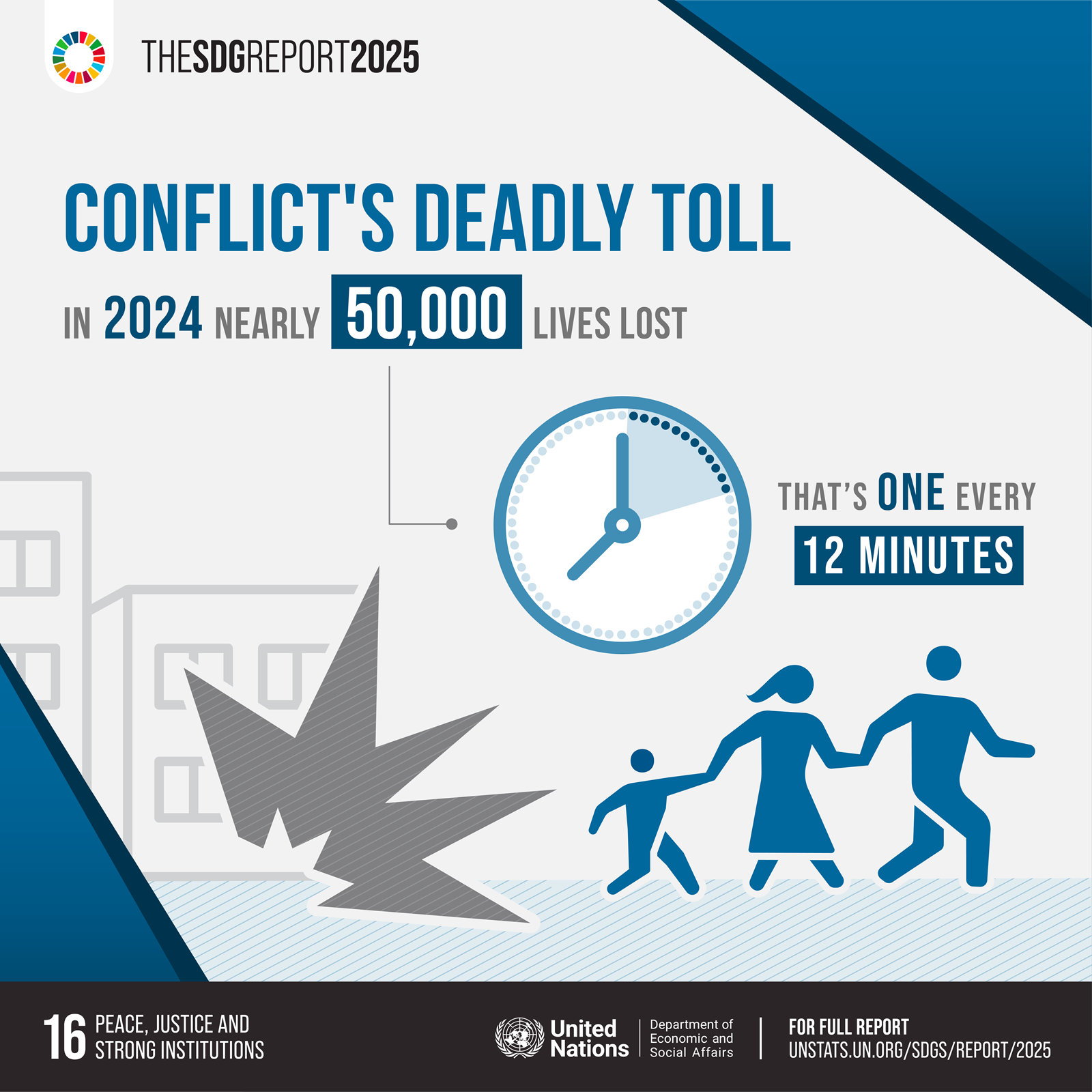
For more information, please visit: https://unstats.un.org/sdgs/report/2025/
More details on SDG 16 in 2025: https://unstats.un.org/sdgs/report/2025/Goal-16/
The 2025 Extended Report on SDG 16 can be found here: https://unstats.un.org/sdgs/report/2025/extended-report/Extended-Report-2025_Goal-16

